Related Research Articles

In mathematics, a Möbius strip, Möbius band, or Möbius loop is a surface that can be formed by attaching the ends of a strip of paper together with a half-twist. As a mathematical object, it was discovered by Johann Benedict Listing and August Ferdinand Möbius in 1858, but it had already appeared in Roman mosaics from the third century CE. The Möbius strip is a non-orientable surface, meaning that within it one cannot consistently distinguish clockwise from counterclockwise turns. Every non-orientable surface contains a Möbius strip.
In mathematics, Thurston's geometrization conjecture states that each of certain three-dimensional topological spaces has a unique geometric structure that can be associated with it. It is an analogue of the uniformization theorem for two-dimensional surfaces, which states that every simply connected Riemann surface can be given one of three geometries . In three dimensions, it is not always possible to assign a single geometry to a whole topological space. Instead, the geometrization conjecture states that every closed 3-manifold can be decomposed in a canonical way into pieces that each have one of eight types of geometric structure. The conjecture was proposed by William Thurston (1982), and implies several other conjectures, such as the Poincaré conjecture and Thurston's elliptization conjecture.
In mathematics, a minimal surface is a surface that locally minimizes its area. This is equivalent to having zero mean curvature.
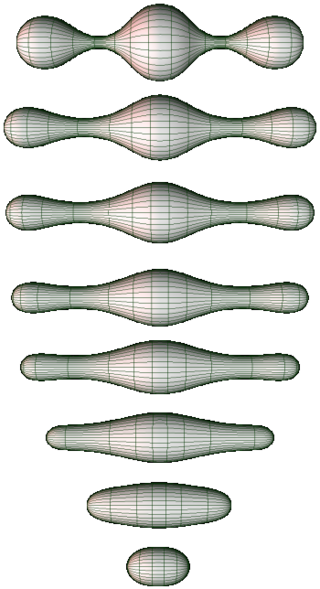
In the mathematical fields of differential geometry and geometric analysis, the Ricci flow, sometimes also referred to as Hamilton's Ricci flow, is a certain partial differential equation for a Riemannian metric. It is often said to be analogous to the diffusion of heat and the heat equation, due to formal similarities in the mathematical structure of the equation. However, it is nonlinear and exhibits many phenomena not present in the study of the heat equation.

Shing-Tung Yau is a Chinese-American mathematician. He is the director of the Yau Mathematical Sciences Center at Tsinghua University and Professor Emeritus at Harvard University. Until 2022 he was the William Caspar Graustein Professor of Mathematics at Harvard, at which point he moved to Tsinghua.
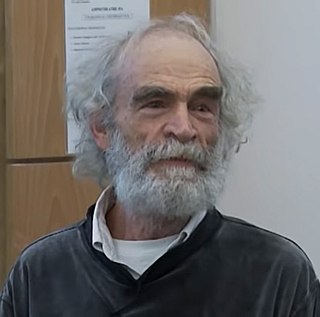
Mikhael Leonidovich Gromov is a Russian-French mathematician known for his work in geometry, analysis and group theory. He is a permanent member of Institut des Hautes Études Scientifiques in France and a professor of mathematics at New York University.

Geometric group theory is an area in mathematics devoted to the study of finitely generated groups via exploring the connections between algebraic properties of such groups and topological and geometric properties of spaces on which these groups act.

In mathematics, a 3-manifold is a topological space that locally looks like a three-dimensional Euclidean space. A 3-manifold can be thought of as a possible shape of the universe. Just as a sphere looks like a plane to a small and close enough observer, all 3-manifolds look like our universe does to a small enough observer. This is made more precise in the definition below.

Richard Melvin Schoen is an American mathematician known for his work in differential geometry and geometric analysis. He is best known for the resolution of the Yamabe problem in 1984.
In mathematics, Floer homology is a tool for studying symplectic geometry and low-dimensional topology. Floer homology is a novel invariant that arises as an infinite-dimensional analogue of finite-dimensional Morse homology. Andreas Floer introduced the first version of Floer homology, now called Lagrangian Floer homology, in his proof of the Arnold conjecture in symplectic geometry. Floer also developed a closely related theory for Lagrangian submanifolds of a symplectic manifold. A third construction, also due to Floer, associates homology groups to closed three-dimensional manifolds using the Yang–Mills functional. These constructions and their descendants play a fundamental role in current investigations into the topology of symplectic and contact manifolds as well as (smooth) three- and four-dimensional manifolds.

In geometric topology, the Clifford torus is the simplest and most symmetric flat embedding of the Cartesian product of two circles S1
a and S1
b. It is named after William Kingdon Clifford. It resides in R4, as opposed to in R3. To see why R4 is necessary, note that if S1
a and S1
b each exists in its own independent embedding space R2
a and R2
b, the resulting product space will be R4 rather than R3. The historically popular view that the Cartesian product of two circles is an R3 torus in contrast requires the highly asymmetric application of a rotation operator to the second circle, since that circle will only have one independent axis z available to it after the first circle consumes x and y.

In differential geometry, the Willmore conjecture is a lower bound on the Willmore energy of a torus. It is named after the English mathematician Tom Willmore, who conjectured it in 1965. A proof by Fernando Codá Marques and André Neves was announced in 2012 and published in 2014.

Robert "Bob" Osserman was an American mathematician who worked in geometry. He is specially remembered for his work on the theory of minimal surfaces.
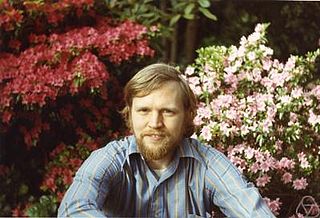
Herbert Blaine Lawson, Jr. is a mathematician best known for his work in minimal surfaces, calibrated geometry, and algebraic cycles. He is currently a Distinguished Professor of Mathematics at Stony Brook University. He received his PhD from Stanford University in 1969 for work carried out under the supervision of Robert Osserman.

In graph-theoretic mathematics, a cycle double cover is a collection of cycles in an undirected graph that together include each edge of the graph exactly twice. For instance, for any polyhedral graph, the faces of a convex polyhedron that represents the graph provide a double cover of the graph: each edge belongs to exactly two faces.

In differential geometry, a triply periodic minimal surface (TPMS) is a minimal surface in ℝ3 that is invariant under a rank-3 lattice of translations.
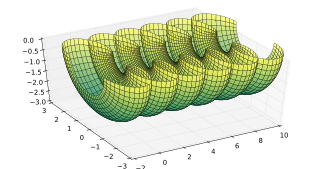
In differential geometry, constant-mean-curvature (CMC) surfaces are surfaces with constant mean curvature. This includes minimal surfaces as a subset, but typically they are treated as special case.
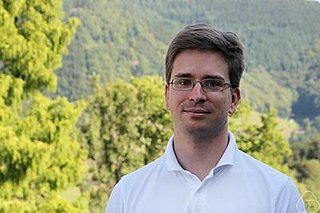
Simon Brendle is a German-American mathematician working in differential geometry and nonlinear partial differential equations. He received his Dr. rer. nat. from Tübingen University under the supervision of Gerhard Huisken (2001). He was a professor at Stanford University (2005–2016), and is currently a professor at Columbia University. He has held visiting positions at MIT, ETH Zürich, Princeton University, and Cambridge University.

William Hamilton Meeks III is an American mathematician, specializing in differential geometry and minimal surfaces.
References
- ↑ Lawson, H. Blaine Jr. (1970). "The unknottedness of minimal embeddings". Invent. Math. 11 (3): 183–187. Bibcode:1970InMat..11..183L. doi:10.1007/BF01404649. S2CID 122740925.
- ↑ Lawson, H. Blaine Jr. (1970). "Complete minimal surfaces in S3". Ann. of Math. 92 (3): 335–374. doi:10.2307/1970625. JSTOR 1970625.
- ↑ Norbury, Paul (2005). "The 12th problem" (PDF). The Australian Mathematical Society Gazette. 32 (4): 244–246.
- ↑ Brendle, Simon (2013). "Embedded minimal tori in S3 and the Lawson conjecture". Acta Mathematica. 211 (2): 177–190. arXiv: 1203.6597 . doi: 10.1007/s11511-013-0101-2 . S2CID 119317563.